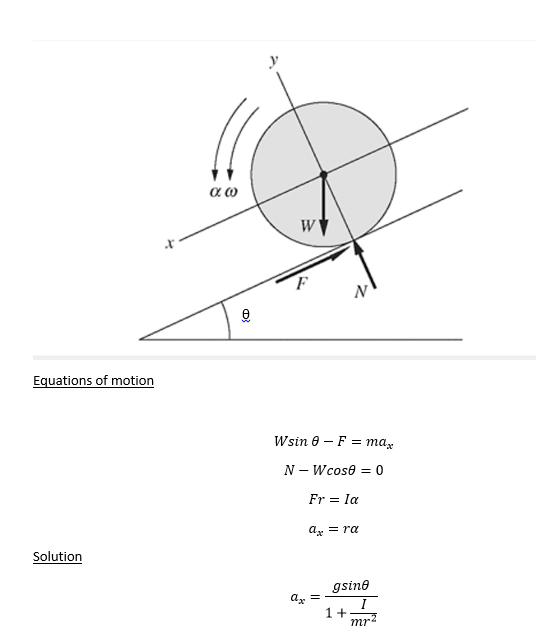If you'll note, this is marked as a "tip" thread....I've been doing a lot of bin design lately....and I had to go back into the old dynamics book to consider some scenarios.....one of them is a ball or cylinder rolling down a incline (without slipping)....I.e. what velocity (relative to it's center) will develop for rolling (without slipping) if it is released from rest on a incline? So here goes:
Vball=[(10/7)*g*L*SinΘ]1/2
Vcylinder=[(4/3)*g*L*SinΘ]1/2
where:
V=velocity [in distance/second]
g=gravitational acceleration
L=rolling distance on incline (starting from release)
Θ=angle of the incline (off the horizontal)
It actually took a while to figure out....so I thought I'd post for the future thread searches for interested parties.
Interesting the subtle difference (based on the different inertias) for the two different shapes.
Thanks for reading.
Vball=[(10/7)*g*L*SinΘ]1/2
Vcylinder=[(4/3)*g*L*SinΘ]1/2
where:
V=velocity [in distance/second]
g=gravitational acceleration
L=rolling distance on incline (starting from release)
Θ=angle of the incline (off the horizontal)
It actually took a while to figure out....so I thought I'd post for the future thread searches for interested parties.
Interesting the subtle difference (based on the different inertias) for the two different shapes.
Thanks for reading.



![[bigsmile] [bigsmile] [bigsmile]](/data/assets/smilies/bigsmile.gif)
![[smile] [smile] [smile]](/data/assets/smilies/smile.gif) )
)